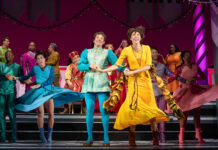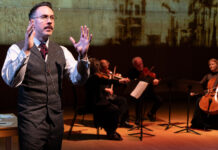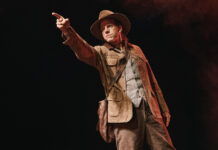If you look at the calendar for classical pianist Marc-André Hamelin, you’ll see that he’ll be playing a very wide range of music over the next couple of months. He’ll be performing piano concerti by Rachmaninoff, Ravel, Shostakovich and Busoni. He has a chamber concert tonight at Walt Disney Concert Hall where he’s joining members of the LA Philharmonic for Dvořák’s Piano Quintet #2 in A Major. On Thursday, Friday and Sunday he’s joining the LA Philharmonic for performances of John Adams’s Grand Pianola Music (conducted by the composer.) And then, lest he become complacent, he has a recital on Tuesday, January 15th at the Reneé and Henry Segerstrom Concert Hall. His program there includes works by Bach, Chopin and Schumann.
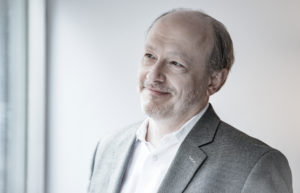
So imagine my surprise when just before leaving his home in Massachusetts to head to Los Angeles for these concerts, he had time to talk about his rather ambitious schedule and the challenges of maintaining it all.
How many major works do you keep actively performance-ready and why so many different works?
It depends. Young performers may not have had the time to work up the kind of repertoire that I have at my age (57). But I am, just as anyone else, subject to the requests of promoters. I may want to play one concerto, say the Ravel, for a whole season, but inevitably I’ll come across instances where it is being played by someone else and I’ll have to change it.
Working up the repertoire is one thing, but keeping them performance-ready is another.
Not really as long as you’ve learned them early – which is the case for almost every one of these pieces. The earlier you learn some of these things, the better you retain them.
How does playing a piece like the Dvořák Quintet satisfy you in ways that solo recitals or symphonic pieces do not?
Everything satisfies me. I have the luxury at this point in my career to be playing, and able to play without exception, pieces that I really love. The Dvořák is an old friend. It’s one of the five great masterpieces of piano quintets. I enjoy the camaraderie of playing with people I haven’t played with before.
Looking back at the premiere of Grand Pianola Music, composer John Adams said, “it must doubtless have seemed like a smirking truant with a dirty face in need of a severe spanking.” What was your first reaction to the piece?
Nowhere near the indignation people felt at the premiere. It divided a lot of people back then probably because we weren’t ready for it. I think it is a lot of fun. You have to count like hell. It’s excessive in every possible way, but it’s one of these things that’s so much fun other once in a while. I think Adams feels very tenderly towards it – he certainly doesn’t regret it.
The way Adams wrote that piece requires, as you said, “counting like hell.” What are the main challenges of performing Grand Pinaola Music?
What you have to be aware of is the absolute irregularity of the pulse. This is something you just feel. The very first rehearsal when we did it in San Francisco (2015) I was at sea because of a combination of the hall’s acoustics and I wasn’t really used to this kind of writing. I was hearing everything wrong and I had to drop out and wait until the next obvious cue like a page later. I got the hang of it. Your concentration can’t flag for a second.
What have you learned about the piece since you first performed it?
Having done it once gets you enough to be worried about the second performance. That’s the most valuable lesson. And you don’t have to worry about something that you were worrying about before. You get much more familiar with the grand arc of the piece and you start to hear more and more of what’s going on. The way I’ve been practicing it before this performance is not so much spending time at the piano, but listening to the recording we did and feeling the performance we did. If you study it carefully without actually playing it, half of the re-practicing work is already done.
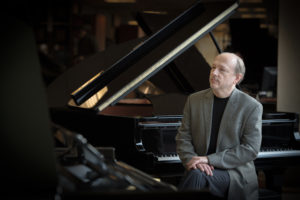
You told Gramophone in 2017 that “sometimes inspiration, enlightenment, watershed moments, can come from the unlikeliest places.” What were some of those moments that had the most profound impact on you?
It’s always difficult to find an example. But I will say that in practicing and as well as performing in public, you have to welcome accidents and imperfections. Because they can certainly yield revelations. They can lead to breakthroughs. I find that musically perhaps the most significantly helpful kind of practicing is the one that happens away from the keyboard. I often find when I’m taking a walk, that’s when I get all kinds of illumination and things get clearer; when tempi settles, when I perceive more the architecture of the work. That’s when solutions to problems can present themselves.
If one looks at your recordings, you are just as passionate about lesser-known works as you are about the standard repertoire. How do you strike a balance for yourself and by extension your audience?
I think that if I truly love the repertoire, I would think that that enthusiasm and love for it will bleed into the public’s appreciation for it. I have a pretty narrow filter as far as what I think will be interesting to an audience. There’s tons of things I just wouldn’t play. But I try to find things that are really interesting which just captivate me and that usually is a barometer for me. I’m hoping that over the years people will have the impression that they can trust me with the programming I offer.
Dvořák said, “My own duty as a teacher, is not so much to interpret Beethoven, Wagner or other masters of the past, but to give what encouragement I can to the young musicians of America.” Do you share his views and what’s the best path for you going forward to accomplish that goal?
As far as playing the standard repertoire, we all think we hold the truth. (He lets out a big laugh.) Even if we don’t. If I’m convinced enough about things or certain ways of doing things that will be enough. Perhaps yes. Perhaps not. There’s always a part of education when I’m presenting a recital, but it’s not in a didactic sense. All I’m doing is saying, “Look what you’ve been missing” or “This can be done in another way” or “Look how beautiful this is.” And I have the privilege of presenting it to you.
All photos of Marc-André Hamelin by Sim Canetti-Clarke/Courtesy of the LA Philharmonic
Note: Hamelin received a Grammy nomination for his recording of Stravinsky’s The Rite of Spring in a two-piano arrangement with Leif Ove Andsnes. Awards will be handed out in February.


